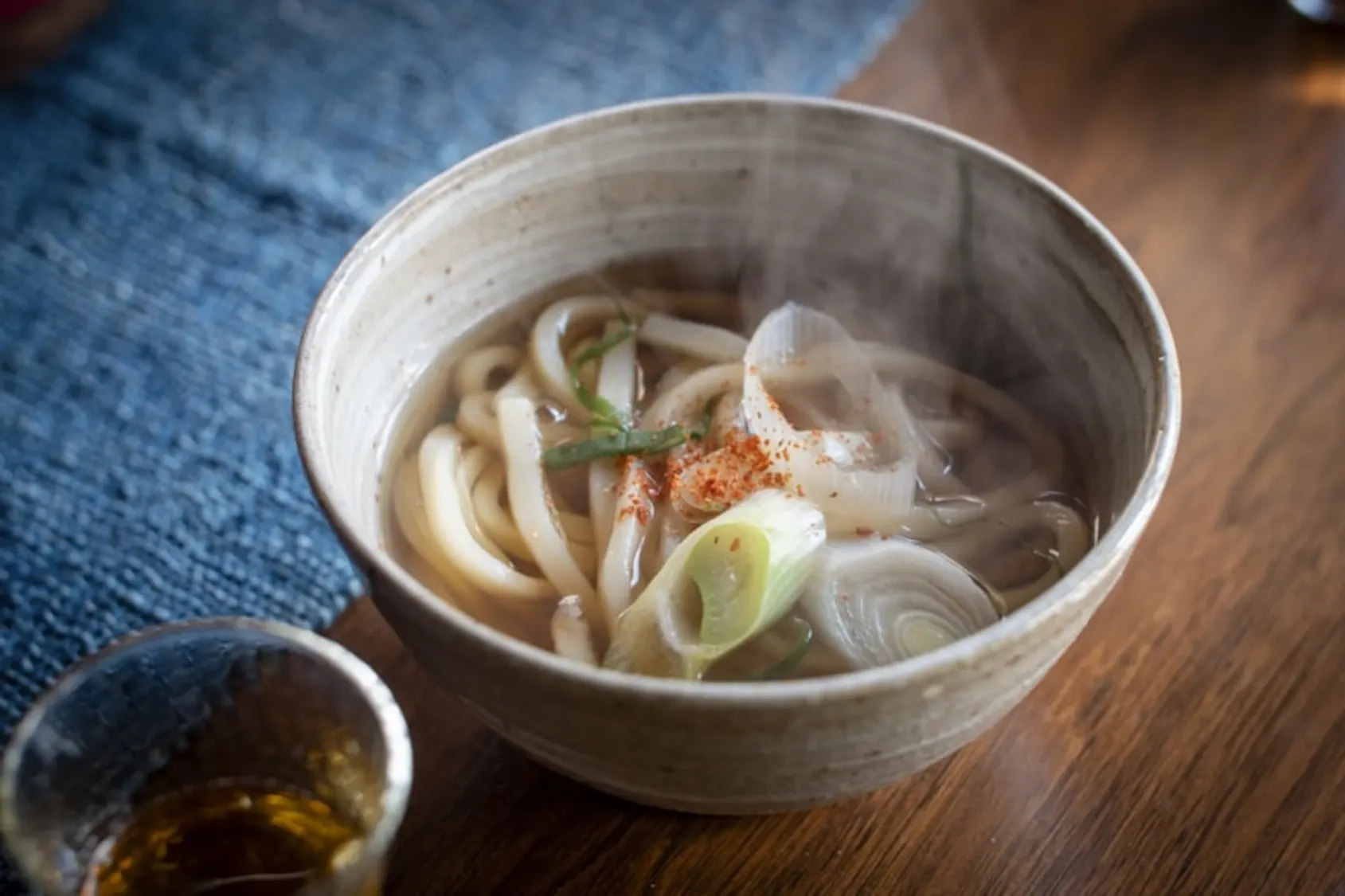
Udon
Thick wheat noodles in hot soup or stir-fried with vegetables.
Ingredients
- •Udon noodles
- •Dashi
- •Green onions
- •Tempura bits
- •Soy sauce
Instructions
Cook Noodles
Boil udon noodles until tender
Prepare Soup
Heat dashi and add seasonings
Udon noodles are one of Japan's most beloved comfort foods, characterized by their thick, chewy texture and remarkable versatility. These wheat flour noodles are notably thicker than other Japanese noodles, giving them a satisfyingly substantial bite that has made them a staple of Japanese cuisine.
The history of udon dates back to the Nara period (710-794), when Buddhist monks brought flour milling technology from China. The noodles quickly became popular due to their filling nature and relatively low cost of production, making them accessible to people of all social classes.
While udon can be served in many ways, the most common preparation is in a hot soup made with dashi broth, garnished with green onions, tempura bits (tenkasu), and sometimes a slice of kamaboko (fish cake). This version, known as kake udon, is the simplest and most fundamental way to enjoy these noodles. Regional variations abound throughout Japan, each adding their own local twists and ingredients.
In the summer months, cold udon dishes become popular, such as zaru udon (chilled noodles served with a dipping sauce) or cold udon salads. There are also stir-fried versions like yaki udon, where the noodles are pan-fried with vegetables and meat or seafood in a savory sauce.
The texture of udon is crucial to its appeal. The best udon noodles are firm yet chewy, with a smooth, silky surface. This texture, known as "koshi" in Japanese, is similar to the concept of "al dente" in Italian cuisine. Many udon shops make their noodles fresh daily, kneading the dough by foot (a traditional method called "fumimomi") to achieve the perfect consistency.
Whether served in a steaming bowl of soup on a cold winter day or chilled with dipping sauce in the summer heat, udon's versatility and satisfying nature have secured its place as one of Japan's most enduring culinary traditions.
